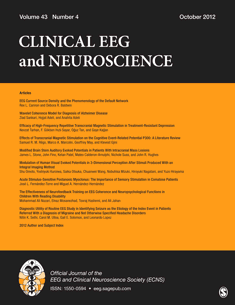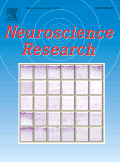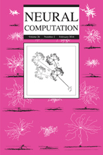
NEUROINFORMATICS
Scope & Guideline
Innovating Research Methodologies in Neuroinformatics
Introduction
Aims and Scopes
- Computational Neuroscience Tools:
Development and application of computational models and tools for simulating and analyzing neural processes, including neural network models and machine learning approaches. - Neuroimaging Techniques:
Utilization and advancement of neuroimaging modalities such as fMRI, EEG, and MRI for studying brain structure and function, including the development of new imaging techniques and analysis methods. - Data Integration and Analysis:
Focus on integrating multimodal neuroimaging data and biological data, enabling comprehensive analyses that facilitate better understanding of brain connectivity and dynamics. - Automated Processing and Machine Learning:
Application of machine learning and automated algorithms to enhance data processing, classification, and analysis in neuroimaging studies, aimed at improving diagnostic accuracy and research efficiency. - Neuroscience Data Sharing and FAIR Principles:
Promotion of open science practices, including data sharing, standardization, and the implementation of FAIR (Findable, Accessible, Interoperable, Reusable) principles in neuroscience research.
Trending and Emerging
- Artificial Intelligence and Machine Learning:
An increasing number of papers focus on the application of AI and machine learning for analyzing neuroimaging data, indicating a trend towards utilizing advanced computational techniques to enhance diagnostic and analytical capabilities. - Integration of Multimodal Data:
There is a growing emphasis on integrating various types of neuroimaging and biological data, enabling researchers to draw more comprehensive insights and foster a deeper understanding of brain function and pathology. - Real-Time Neuroimaging Analysis:
Emerging research is increasingly focused on real-time analysis of neuroimaging data, which is crucial for applications in clinical settings and for enhancing the understanding of dynamic brain processes. - Neuroinformatics Education and Training:
A trend towards developing educational frameworks and resources in neuroinformatics suggests a commitment to fostering a new generation of researchers skilled in computational methods and data management. - Open Science and Data Sharing Initiatives:
There is a notable increase in publications advocating for open science practices and data sharing initiatives, reflecting a broader movement towards transparency and collaboration in neuroscience research.
Declining or Waning
- Traditional Statistical Methods:
There is a noticeable decrease in the use of traditional statistical methodologies in favor of more advanced machine learning techniques, suggesting a shift towards data-driven approaches in neuroinformatics. - Basic Neuroanatomy Studies:
Research focusing solely on basic neuroanatomy without computational tools or data integration is becoming less frequent, as the field increasingly emphasizes the application of informatics in understanding complex brain structures. - Single-Modal Neuroimaging Studies:
Publications centered around single-modal neuroimaging approaches are declining as there is a growing trend towards multimodal studies that combine various imaging techniques for a more holistic understanding of brain function. - Manual Data Processing Techniques:
Manual and semi-automated data processing methods are being phased out in favor of fully automated solutions, reflecting the demand for efficiency and reproducibility in neuroinformatics research.
Similar Journals

BRAIN RESEARCH
Your gateway to cutting-edge neuroscience research.BRAIN RESEARCH is a premier journal published by Elsevier, specializing in the intricate domains of neuroscience, developmental biology, and molecular biology. Established in 1966, this esteemed publication has become a cornerstone for researchers, professionals, and students dedicated to advancing our understanding of brain function and disorders. With an impressive impact factor and a consistent presence in the Q2 quartiles across key categories—such as Developmental Biology, Neurology, and Neuroscience—it stands out as an essential resource for disseminating innovative research and pioneering insights. The journal's scope encompasses both clinical and fundamental studies, fostering a multidisciplinary approach to the complexities of neural systems. Although it is not an open-access journal, BRAIN RESEARCH provides a vital platform for sharing progressive findings that can inspire future studies and contribute significantly to the evolutionary discourse in neuroscience. Based in the Netherlands, at RADARWEG 29, 1043 NX AMSTERDAM, BRAIN RESEARCH continues to shape the landscape of neuroscience research, inviting submissions that explore the latest discoveries and therapeutic strategies.

Neuropsychologia
Advancing Insights into Behavioral and Cognitive ProcessesNeuropsychologia, published by PERGAMON-ELSEVIER SCIENCE LTD, is a premier journal that delves into the intersections of psychology and neuroscience, specifically focusing on behavioral and cognitive processes. Since its inception in 1963, this esteemed journal has been a vital platform for researchers, professionals, and students, showcasing innovative studies and advancements in the fields of Behavioral Neuroscience, Cognitive Neuroscience, and Experimental Psychology. With a commendable impact factor, placing it in the Q2 category across multiple disciplines, Neuropsychologia is recognized for its contribution to the scientific community, ranking among the top journals in both Experimental and Cognitive Psychology and Neuroscience. The journal's commitment to excellence is evident in its rigorous peer-review process and its mission to disseminate cutting-edge research, making it an invaluable resource for those seeking to expand their knowledge and insights in neuropsychology. For further reading, the journal is accessible in both print and digital formats, ensuring that researchers can easily engage with the latest findings and theoretical advancements in this dynamic field.

AIMS Neuroscience
Empowering minds with cutting-edge neuroscience insights.AIMS Neuroscience is an esteemed open-access journal published by the American Institute of Mathematical Sciences (AIMS), dedicated to advancing the field of neuroscience since its inception in 2014. With a robust ISSN of 2373-8006 and an E-ISSN of 2373-7972, this journal aims to provide a platform for innovative research and scholarly discourse that spans the diverse and dynamic landscape of the neuroscience discipline. As of 2023, it holds a respectable Q3 category ranking in the miscellaneous neuroscience field and ranks #65 out of 113 in general neuroscience according to Scopus, positioning it in the 42nd percentile for impact. AIMS Neuroscience encompasses a broad scope of topics, from neurobiology and cognitive neuroscience to computational models and neuroengineering, making it a vital resource for researchers, professionals, and students alike. The journal's commitment to open access ensures that cutting-edge research is freely available, fostering collaboration and knowledge sharing within the global neuroscience community.

CLINICAL EEG AND NEUROSCIENCE
Unlocking the Mysteries of Neurological DisordersCLINICAL EEG AND NEUROSCIENCE, published by SAGE Publications Inc, stands as a pivotal journal in the fields of neurology and neuroscience, with a focus on the latest research and advancements in clinical electroencephalography and neurophysiology. Since its inception in 1970, the journal has provided a platform for rigorous scholarly work, offering valuable insights into neurological disorders and EEG technology. With its current categorization in the Q2 and Q3 quartiles across various subfields of medicine and neurology, it ranks prominently in the Scopus database, emphasizing its significance in academic discourse. The journal's commitment to disseminating high-quality research is underscored by its open access options, facilitating broader accessibility to its published findings. For researchers, clinicians, and students alike, CLINICAL EEG AND NEUROSCIENCE remains an essential resource for keeping abreast of the evolving landscape of neurological studies.

NEUROSCIENCE RESEARCH
Advancing the Frontiers of Neural DiscoveryNEUROSCIENCE RESEARCH, published by Elsevier Ireland Ltd, is a leading journal in the field of neuroscience, with a notable reputation for disseminating high-quality research that spans a variety of topics within the discipline. With an ISSN of 0168-0102 and an E-ISSN of 1872-8111, this journal serves as a vital platform for both established researchers and emerging voices in the field. Ranking in the Q2 quartile in both Medicine and Neuroscience categories, it has been recognized as a reliable source of innovative findings since its inception in 1984, with continuous publication through 2024. Although it does not currently offer Open Access options, the journal is indexed in Scopus, holding a significant position at Rank #48/113 in General Neuroscience, reflecting its contribution to advancing the understanding of neural mechanisms across various contexts. With its address anchored in Ireland, NEUROSCIENCE RESEARCH plays an essential role in bridging scientific inquiry and practical applications, making it an indispensable resource for researchers, professionals, and students dedicated to the burgeoning field of neuroscience.

EXPERIMENTAL BRAIN RESEARCH
Illuminating the Path to Understanding Brain MechanismsEXPERIMENTAL BRAIN RESEARCH is a renowned journal published by SPRINGER, dedicated to advancing understanding in the field of neuroscience. With a history dating back to 1966, this journal offers valuable insights into the mechanisms of brain function and neurological disorders, making it a vital resource for researchers, professionals, and students alike. While it currently holds a Q3 classification in the field of Neuroscience (miscellaneous) and ranks #73 out of 113 in Scopus's General Neuroscience category, it continually contributes to fostering innovative research and collaborative dialogue. The journal is not open access, ensuring that although content is subscription-based, it maintains a high standard of peer review and scholarly rigor. By covering a breadth of topics relevant to both experimental and theoretical aspects of brain research, EXPERIMENTAL BRAIN RESEARCH serves as an essential platform for disseminating cutting-edge discoveries and theories in the dynamic realm of neuroscience.

NEURAL COMPUTATION
Unraveling the complexities of neural processes through computation.NEURAL COMPUTATION, published by MIT PRESS, is a leading academic journal that focuses on the interdisciplinary field of neural computing, combining insights from artificial intelligence, cognitive neuroscience, and computational modeling. With an impressive impact factor and consistently high rankings—being positioned in the Q1 category of Arts and Humanities and Q2 in Cognitive Neuroscience—this journal serves as a vital resource for researchers and professionals interested in understanding the complex interactions between neural processes and computational systems. Founded in 1995 and continuing through its converged years until 2024, NEURAL COMPUTATION publishes cutting-edge articles that advance theoretical knowledge and practical applications in both fields. While it does not provide open access, the journal ensures rigorous peer-review processes, making it an essential platform for disseminating significant research findings. With its commitment to fostering innovation and understanding at the intersection of neuroscience and computation, NEURAL COMPUTATION stands out as a cornerstone for academic exploration and discovery.

Interdisciplinary Sciences-Computational Life Sciences
Catalyzing Interdisciplinary Research in Life SciencesInterdisciplinary Sciences-Computational Life Sciences, published by SPRINGER HEIDELBERG, is a premier journal dedicated to advancing the field of life sciences through the lens of computational methods. With an ISSN of 1913-2751 and an E-ISSN of 1867-1462, this journal serves as a significant platform for researchers and professionals alike, fostering innovation and collaboration across various disciplines. As a testament to its impact, the journal holds a Q2 category status in Biochemistry, Genetics and Molecular Biology, Computer Science Applications, and Health Informatics, reflecting its influential contributions and rigorous peer-review process. The Scopus rankings demonstrate its esteemed placement within its fields, with notable percentiles that highlight its relevance and reach. While the journal operates under a traditional access model, its commitment to publishing high-quality research continues to stimulate important discussions and developments within the scientific community. Founded in 2009 and converging through 2024, Interdisciplinary Sciences-Computational Life Sciences remains an essential resource for the latest discoveries at the intersection of computation and life sciences, appealing to both seasoned researchers and enthusiastic students eager to contribute to this dynamic field.

TRENDS IN NEUROSCIENCES
Unveiling the Latest Trends in Brain ScienceTRENDS IN NEUROSCIENCES, published by CELL PRESS, is a leading journal in the field of neuroscience, offering cutting-edge insights and important developments in the rapidly evolving landscape of brain research. With an impressive Impact Factor and ranking in the top quartile (Q1) of the category for Neuroscience (miscellaneous), it is positioned as a vital resource for researchers and professionals seeking to stay abreast of the latest discoveries and trends from 1978 to the present. Specifically ranked #3 out of 113 in General Neuroscience by Scopus, this journal promotes the interdisciplinary exchange of ideas and knowledge, making it an essential platform for students and experienced scholars alike. Although it is not an Open Access journal, its value lies in its rigorous peer-review process and commitment to maintaining the highest standards of academic integrity. By continuing to explore the complexities of neural processes and behavior, TRENDS IN NEUROSCIENCES plays a crucial role in shaping the future of neuroscience research and education.

Frontiers in Neuroinformatics
Bridging Disciplines for a Deeper Understanding of the BrainFrontiers in Neuroinformatics is a prestigious open-access journal published by FRONTIERS MEDIA SA in Switzerland, dedicated to advancing the interdisciplinary field of neuroinformatics. Since its inception in 2007, the journal has played a crucial role in facilitating knowledge exchange among researchers and professionals, exploring the intersection of neuroscience, biomedical engineering, and computer science applications. With an impressive Q2 ranking in both Biomedical Engineering and Computer Science Applications, and a Q3 ranking in Neuroscience, the journal consistently showcases cutting-edge research and innovations that push the boundaries of our understanding of the brain and its computational models. Positioned prominently within the Scopus rankings, with a rank of #15/49 in Neuroscience (miscellaneous) and a 70th percentile standing, Frontiers in Neuroinformatics is essential reading for anyone engaged in this dynamic field. Researchers, students, and practitioners are encouraged to contribute to and leverage this accessible platform to foster collaboration and drive scientific progress.